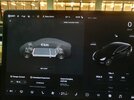See now you are trying to make your frustration the basis of your opinion that Tesla is "lying". I feel for you, I really do, but Tesla never implied that the batteries were going to behave, degradation wise, is any other way than the simplistic greater than 70% retention after 8 years/120k(miles) according to the warranty. Do I believe that should publicize a degradation curve for the warranty, or at least a few more data points, yeah that would be great.
Another point I would like to make is that even if you got a Model S, depending on when and what version pack you got, chemistries changed. The previous 90kWh pack degraded twice as fast in the beginning as the 85kWh pack did. So while I understand you seeing some people say they have better batteries on the S, you aren't necessarily getting the whole picture.
We are still in the wild west for long range EV batteries. Getting prices down has to sacrifice something. If the model 3 battery was so much better, I would have thought that Tesla would have changed the Model S over to the 2170 cell but they didn't.



